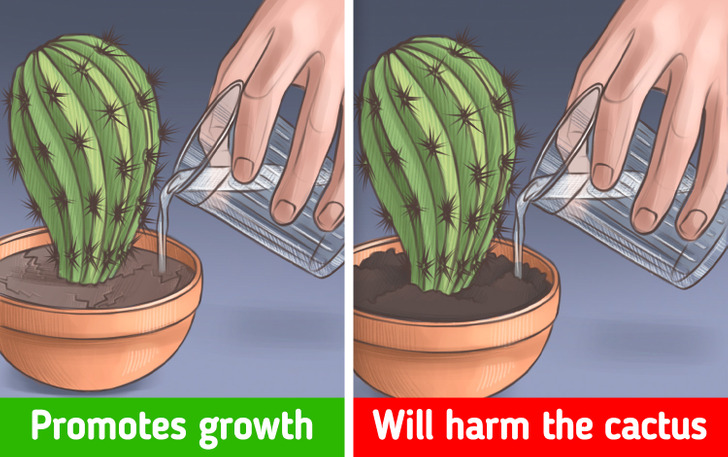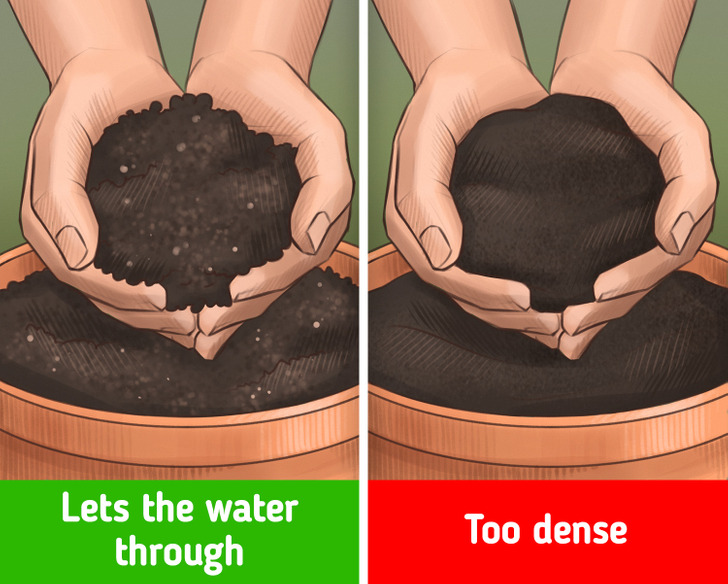How to Take Care of Cacti

Cacti stand out among other house plants thanks to their unusual look. They are diverse by shape and size and look great in different interiors.
5-Minute Crafts is telling you how to take care of one of the most popular house plants.
Light

Cacti need sunlight. Many cacti bloom in sunlight, and that’s why they should be placed in the warmest, sunniest corner of your home. If you have a patio or balcony, you can place cacti there in summer as long as the temperature doesn’t drop below 50°F at night.
However, not all types of cacti like sunlight that much. Forest cacti, like the Christmas cactus, can’t tolerate intense sun rays, especially when the temperature becomes hot. Such cacti should be protected from sunlight in the second half of the day.
You should also bear in mind that any cactus may start to feel uncomfortable when exposed to the light. In this case, it will turn yellow or lose color, which will be a signal that the cactus should be replaced. If the cactus is bending toward the light, it means the plant should be moved closer to the source of the light.
Water

It might seem like cacti that normally grow in deserts don’t need frequent watering. However, it’s wrong — cacti are really capable of overcoming drought, but the water is an integral part of their successful growth.
If your cactus is located in a sunny spot, it should be watered every week, making sure the soil becomes dry between the watering sessions. Otherwise, the roots and the bottom parts of the plant can rot.
Ideally, tap water shouldn’t be used for watering cacti, as the minerals that it contains will be gradually accumulating and appear as deposits on the leaves. Also, such minerals disrupt the process of obtaining the necessary nutrients.
In fall and winter, it’s worth reducing the amount of watering since the cacti are in hibernation during these periods.
Soil

Soil for cacti must be well-draining. There are special mixtures that you can get in stores or you can create your own blend by adding some sand and grit to your compost part of the soil, which will make it more grainy and less dense.
In order to check whether the blend that you get is good for cacti, it’s necessary to detect the time with which water seeps through the soil during irrigation. Ideally, it should sip through within a minute. If this process takes more time, make sure to add more sand to the mixture.
Feeding

Just like other plants, cacti require regular feeding for more intense growth. Low-nitrogen or cactus blend fertilizer will be good food for these plants. The feeding should be done every several weeks during spring and summer, as it is during this period that they start to grow intensively.
The feeding should be added only into the wet soil — for example, right after watering, otherwise, it can harm the roots of the cactus.
Repotting

Cacti should be repotted no less than once a year because they need fresh soil. Also, during repotting, you’ll be able to check whether the cactus’s roots are damaged or not.
- First, water the plant and let the water drain, then carefully take the cactus out of the pot. Make sure to use gloves to protect your hands from spikes.
- Remove the old soil from the roots with a thin stick, trying not to damage them. Pour a layer of soil mixture into the new pot that should be a bit bigger in diameter than the previous pot and plant your cactus there.
- Fill the rest of the pot with the residuals of the mixture and press firmly down. Keep in mind that the cactus shouldn’t be watered right after repotting, otherwise, you won’t be able to prevent the rotting of the roots.